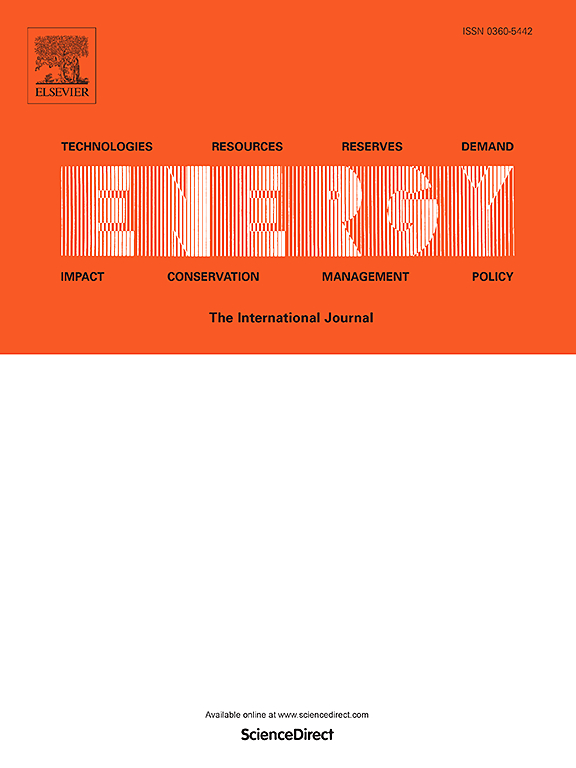Study for improving ammonia combustion and emissions using different hydrogen addition strategies in pre-chamber turbulent jet ignition mode
IF 9
1区 工程技术
Q1 ENERGY & FUELS
引用次数: 0
Abstract
The turbulent jet ignition (TJI) mode is a viable strategy to achieve high thermal efficiency and low nitrogen oxide (NOx) emissions for ammonia (NH3). In this study, the combustion behavior and NOx emissions were comprehensively compared under lean-burn condition for active TJI mode with pure NH3, active TJI mode with pre-chamber H2 addition, and passive TJI mode with NH3/H2 blend. The results indicated that the active TJI mode with the equivalence ratio (ER) of the pre-chamber increased from 0.6 to 0.9 by H2 addition produces a higher velocity jet flame that rebounds into the main chamber, substantially shortening ignition delay and initial flame duration while avoiding excessive peak heat release rates. Increasing the ER or the H2 energy ratio in the main chamber raises the flame temperature and radical concentrations. This reduces the final fuel NO and NO2 emissions while increasing thermal+prompt NO and NO2 emissions, which become dominant. In all TJI cases in this study, total N2O emissions are dominated by fuel N2O. During the early combustion stage, fuel NOx is concentrated at the flame front. In the later stage, fuel NO and NO2 are mainly distributed near the chamber wall, while fuel N2O remains close to zero. Thermal+prompt NOx is generated in high-temperature regions during the later combustion stage, declining slowly after peaking.
求助全文
约1分钟内获得全文
求助全文
来源期刊

Energy
工程技术-能源与燃料
CiteScore
15.30
自引率
14.40%
发文量
0
审稿时长
14.2 weeks
期刊介绍:
Energy is a multidisciplinary, international journal that publishes research and analysis in the field of energy engineering. Our aim is to become a leading peer-reviewed platform and a trusted source of information for energy-related topics.
The journal covers a range of areas including mechanical engineering, thermal sciences, and energy analysis. We are particularly interested in research on energy modelling, prediction, integrated energy systems, planning, and management.
Additionally, we welcome papers on energy conservation, efficiency, biomass and bioenergy, renewable energy, electricity supply and demand, energy storage, buildings, and economic and policy issues. These topics should align with our broader multidisciplinary focus.
 求助内容:
求助内容: 应助结果提醒方式:
应助结果提醒方式:


